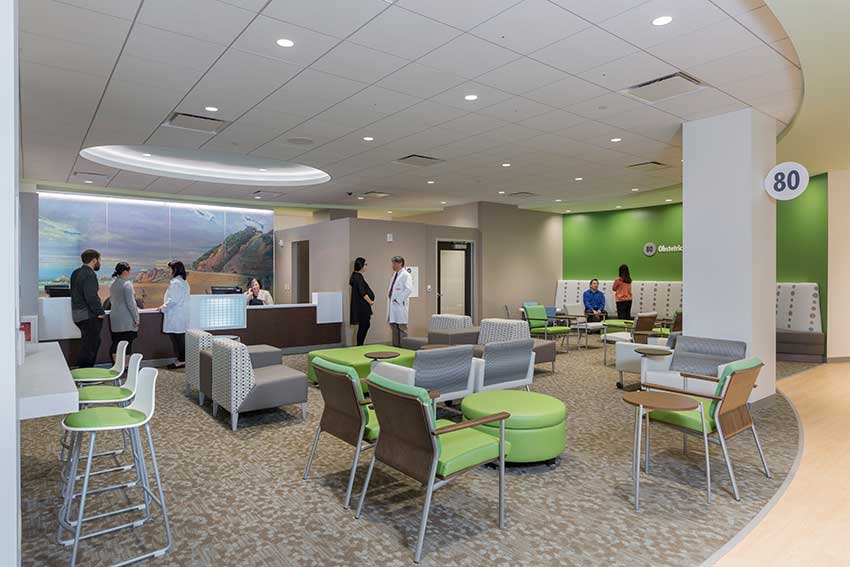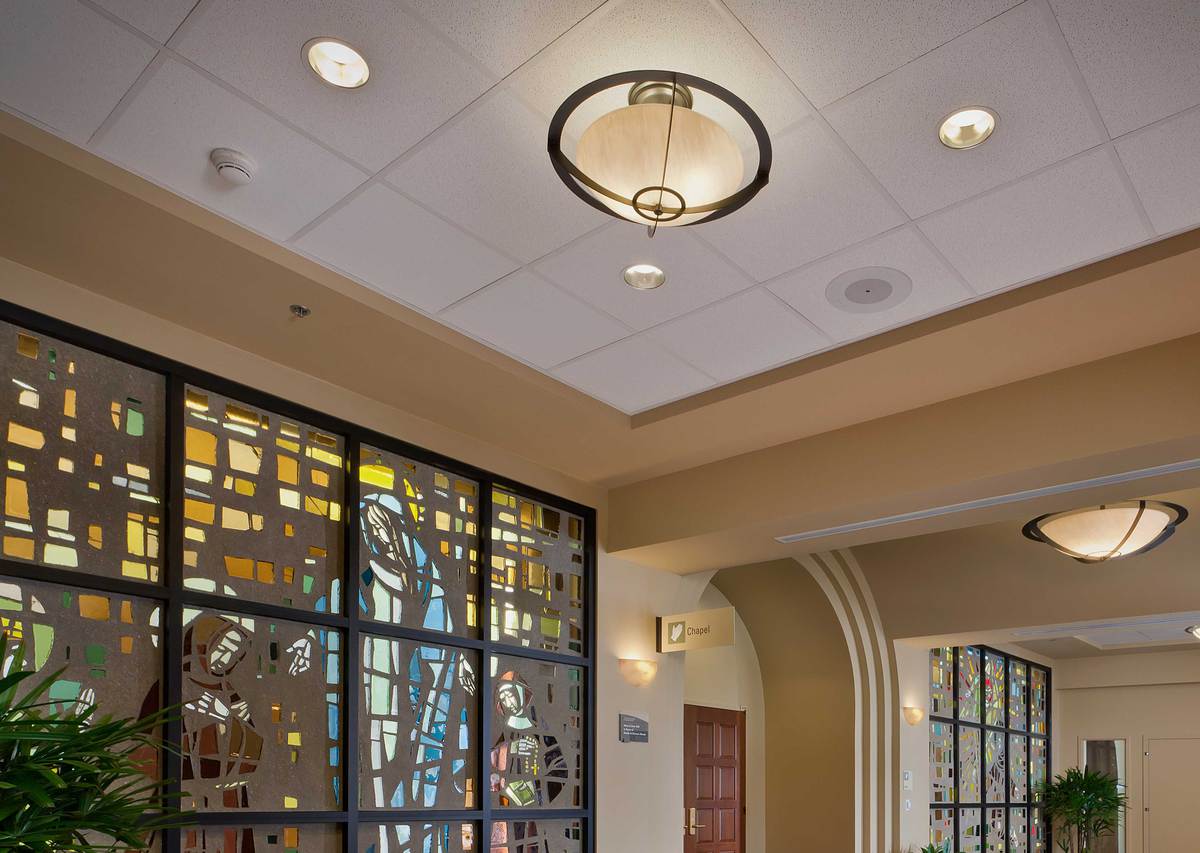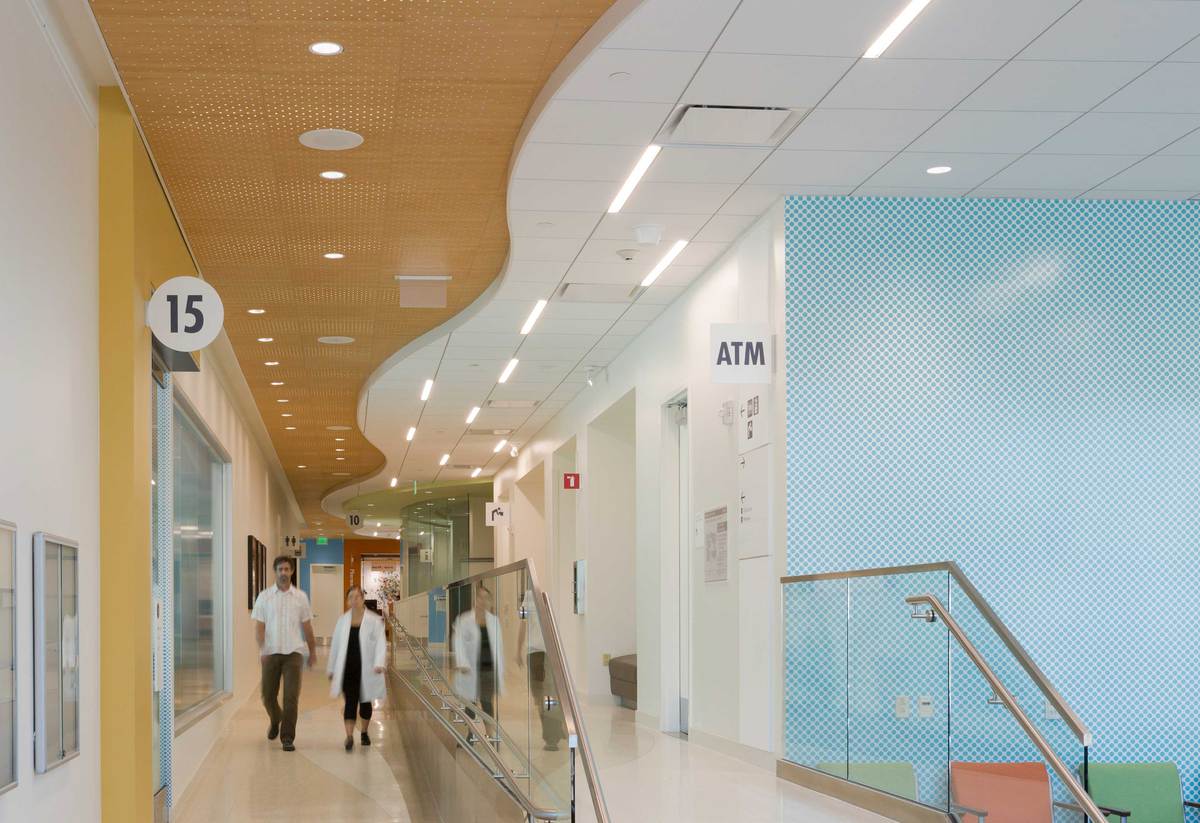Stone Wool Ceiling Tiles in Healthcare
 1 AIA LU/HSW; 1 IDCEC CEU/HSW; 1 GBCI CE Hour; 0.1 IACET CEU*; 1 AIBD P-CE; AAA 1 Structured Learning Hour; This course can be self-reported to the AANB, as per their CE Guidelines; AAPEI 1 Structured Learning Hour; This course can be self-reported to the AIBC, as per their CE Guidelines.; MAA 1 Structured Learning Hour; This course can be self-reported to the NLAA.; This course can be self-reported to the NSAA; NWTAA 1 Structured Learning Hour; OAA 1 Learning Hour
1 AIA LU/HSW; 1 IDCEC CEU/HSW; 1 GBCI CE Hour; 0.1 IACET CEU*; 1 AIBD P-CE; AAA 1 Structured Learning Hour; This course can be self-reported to the AANB, as per their CE Guidelines; AAPEI 1 Structured Learning Hour; This course can be self-reported to the AIBC, as per their CE Guidelines.; MAA 1 Structured Learning Hour; This course can be self-reported to the NLAA.; This course can be self-reported to the NSAA; NWTAA 1 Structured Learning Hour; OAA 1 Learning Hour
Learning Objectives:
- Describe how high-performance ceiling tiles with a high Noise Reduction Coefficient (NRC) can positively impact acoustics in the healthcare environment.
- Explain how stone wool ceiling tiles can help deliver on indoor air quality (IAQ), mold and mildew, and fire resistance.
- List product performance standards and material ingredient reports that provide transparency for acoustic ceiling tiles.
- Discuss how high-performance ceiling systems meet building design standards and evidence-based design recommended practices.
This course is part of the Healthcare Academy
Transparency And Specifying For Product Performance
In the healthcare world, there are new evidence-based designs that support reduced treatment times and increased levels of patient comfort. The Center for Health Design categorizes the use of high-performing, sound-absorptive, acoustic ceilings (NRC 0.90 or higher) as a priority design recommendation based on the strength of the evidence available and the impact on safety, quality, and cost.
Knowing how to specify for products and systems that meet these recommendations is important—and that requires independent verification. Product transparency, disclosure, and optimization documentation can help with specifying products for IEQ and resilience. Architects have a range of resources to consult for third-party testing that ensures product performance for meeting certifications. New codes and standards are now driving designers toward a higher level of IEQ characteristics, such as sound absorption and IAQ, which means resilient products are becoming the norm. These codes and standards are all highly relevant when meeting LEED, WELL, FGI, and other certifications.
When specifying for acoustic tile systems, there are a few ways to obtain verifiable product performance information. Key to transparency and product performance assurance are independent, third-party labels, evaluations, and program certifications such as UL GREENGUARD Gold and Declare and product reports such as Environmental Product Declarations and Health Product Declarations.
An Environmental Product Declaration (EPD) report summarizes the life-cycle impact of a product from “cradle to grave” based on a product’s life-cycle assessment (LCA). An EPD report includes information about a product’s global warming potential, its potential toxicity, and manufacturer’s sustainability initiatives, among other things. EPDs do not rank products. Instead, an EPD is a transparency tool that helps specifiers make choices based on sustainable qualities and environmental impacts. Products with EPDs can contribute to LEED and WELL credits.
A Health Product Declaration (HPD) is similar to an EPD but is focused on the health impacts of the product. HPDs are shared by manufacturers to disclose a product’s ingredients and any health hazards associated with the ingredients. HPDs may be created by product manufacturers, by the manufacturer’s agent, or by a third party. As with EPDs, an HPD is a transparency document that allows a specifier or building owner to compare the health impacts of products using a standardized format. Products with HPDs can also contribute to both LEED and WELL credits. With LEED Third-party verified HPDs contribute an additional ½ credit versus self verified.

Photo courtesy of Rockfon
Specifying for ceiling systems for health design includes examining product reports through third-party reports, such as a Health Product Declaration (HPD).

Photo courtesy of Rockfon
It is important to understand the specification process for ceiling systems in healthcare settings and use the planning, design, and construction guidelines set by the Facility Guidelines Institute.
These are strict requirements that help ensure products are acceptable for use in environments like healthcare facilities. The Facility Guidelines Institute (FGI) serves as an authority on health and residential care facility planning, design, and construction in the U.S. and is often used to inform guidelines abroad. The guidelines are consensus- and researched-based and are used by stakeholders across the industry including regulators, designers, and facility owners, in order to protect public health, safety and well-being.
Another verification source is Declare. Manufacturers voluntarily disclose product information on easy-to-read Declare labels. These labels report all product ingredients and use a simple color code system to flag chemicals of concern. Further information is provided on the product’s final assembly locations, life expectancy, end-of-life options, and overall compliance with relevant requirements of the Living Building Challenge (LBC).
All active Declare labels are accessible on a free and searchable database. The database is used by leading designers, large real estate owners, and conscientious homeowners to specify products they know they can trust and that meet the requirements of leading green building standards, including the Core Green Building, LBC, LEED, and WELL certifications. Declare indicates 100% disclosure and presence of a red list ingredient not covered by an exemption. Declare LBC Red List Free indicates 100% disclosure and that the product does not contain any chemical on ILFI’s red list. Declare LBC Red List Approved indicates greater than 99% disclosure and the use of an exemption.
When products are selected for IEQ features, they can often lead to building credits and certifications. For instance, LEED v4.1 offers acoustic credits in three categories we discussed previously: maximum background noise produced by HVAC systems, minimum isolation from adjacent spaces, and an adequate amount and type of sound-absorbing finishes. Walls and ceilings are the critical building components in determining whether these credits have been achieved.
The WELL v2 standard has an entire concept dedicated to acoustics, called “Sound.” There are eight features within the category, providing options for project teams to explore noise control and intentional acoustic design. The features are sound mapping, maximum noise levels, sound barriers, reverberation time, sound-reducing surfaces, minimum background sound, impact noise management, and enhanced audio devices.
CONCLUSION
By their nature, healthcare centers and hospitals host vulnerable occupants who require a healing environment. Acoustical ceiling tiles in healthcare should support important indoor environmental quality components such as acoustics, light, aesthetics, and indoor air quality. High-performance ceiling systems that are durable will hold up to infection control and cleaning measures, while also enhancing natural light and resisting moisture and mold. In this setting, products that support Indoor Air Quality can lessen the load on patients already dealing with illness and provide staff with a healthy environment as well. Extremely important to healthcare facilities are speech privacy and intelligibility, which requires ceiling tiles and systems that absorb sound so that health providers can communicate vital information and patients can sleep and recover in peaceful spaces.
The pandemic provided a spark in innovation for design. Medical centers are expected to redesign and, in future builds, imagine a whole new way of incorporating infectious disease rooms with other areas of care, in addition to lobbies, conference centers, and offices—all of which can quickly adapt to patient care if there is a crisis. These innovations continue to evolve to meet health, safety, and wellness needs by understanding and specifying for the most durable and lasting cutting-edge technologies. Ceiling systems play a major role in this evolution.












